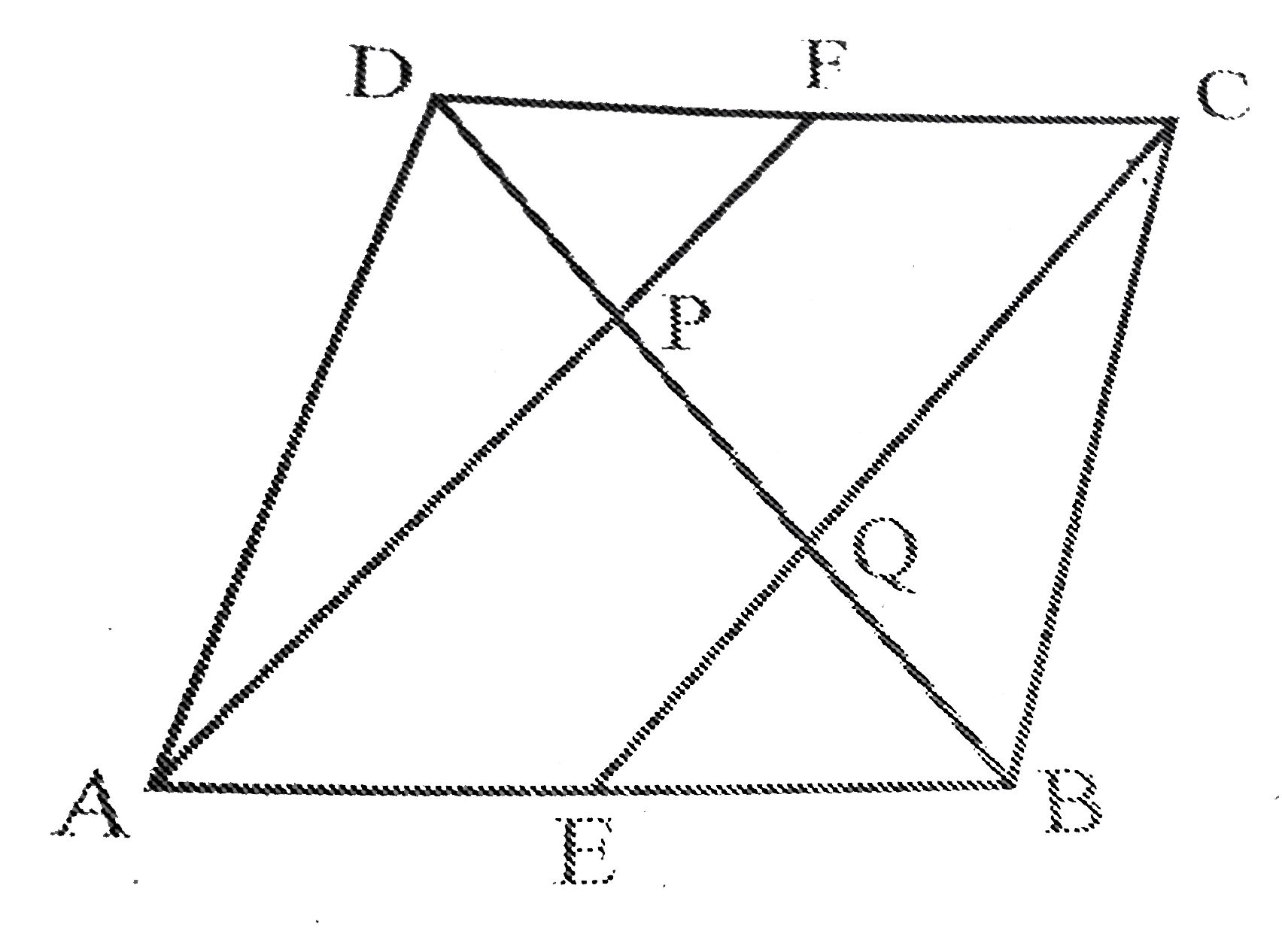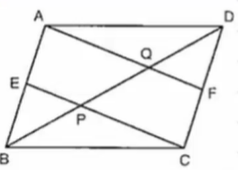Let ABCD be a parallelogram. Let X and Y be the midpoints of the sides BC and AD respectively. Let M and N be the midpoints of the sides AB and CD respectively.
Consider the following statements :
1. The straight line MX cannot be parallel to YN.
2. The straight lines AC, BD, XY and MN meet at a point.
Which of the above statements is/are correct?
1 only
2 only
Both 1 and 2
Neither 1 nor 2
To solve the problem, we need to analyze the two statements regarding the parallelogram ABCD and the midpoints of its sides.
Step 1: Understand the Geometry of the Parallelogram
- We have a parallelogram ABCD.
- X is the midpoint of side BC.
- Y is the midpoint of side AD.
- M is the midpoint of side AB.
- N is the midpoint of side CD.
Step 2: Analyze Statement 1
- Statement 1 claims that the line segment MX cannot be parallel to YN.
- To check this, we need to understand the positions of points M, X, Y, and N.
- Since M and N are midpoints of opposite sides (AB and CD), and X and Y are midpoints of the other two sides (BC and AD), we can conclude that:
- The line segments MX and YN connect midpoints of parallel sides.
- Therefore, MX is parallel to YN because they are both connecting midpoints of parallel lines.
Conclusion for Statement 1: This statement is incorrect.
Step 3: Analyze Statement 2
- Statement 2 claims that the lines AC, BD, XY, and MN meet at a point.
- In a parallelogram, the diagonals (AC and BD) bisect each other, meaning they intersect at a point.
- The lines XY and MN are also drawn between midpoints of sides of the parallelogram.
- By the properties of a parallelogram and the midpoints, we can show that XY and MN will also intersect at the same point where AC and BD intersect.
Conclusion for Statement 2: This statement is correct.
Final Conclusion
- Statement 1 is incorrect.
- Statement 2 is correct.
Thus, the correct answer is that only Statement 2 is true.
- We have a parallelogram ABCD.
- X is the midpoint of side BC.
- Y is the midpoint of side AD.
- M is the midpoint of side AB.
- N is the midpoint of side CD.
- Statement 1 claims that the line segment MX cannot be parallel to YN.
- To check this, we need to understand the positions of points M, X, Y, and N.
- Since M and N are midpoints of opposite sides (AB and CD), and X and Y are midpoints of the other two sides (BC and AD), we can conclude that:
- The line segments MX and YN connect midpoints of parallel sides.
- Therefore, MX is parallel to YN because they are both connecting midpoints of parallel lines.
- Statement 2 claims that the lines AC, BD, XY, and MN meet at a point.
- In a parallelogram, the diagonals (AC and BD) bisect each other, meaning they intersect at a point.
- The lines XY and MN are also drawn between midpoints of sides of the parallelogram.
- By the properties of a parallelogram and the midpoints, we can show that XY and MN will also intersect at the same point where AC and BD intersect.
- Statement 1 is incorrect.
- Statement 2 is correct.
Similar Questions
Let ABCD be a parallelogram of area 124cm2 If E and F are the mid-points of the sides AB and CD respectively then find the area of the parallelogram AEFD
View SolutionIn a parallelogram ABCD, E and F are the mid-points of sides BC and AD respectively. Show that the line segment BF and ED trisect the diagonal AC.
View Solution
Knowledge Check
Let D, E and F be the middle points of the sides BC,CA and AB respectively of a triangle ABC. Then, AD + BE + CF equals to
A0B0C2DNone of these
In a parallelogram ABCD, E and F are the mid-points of sides AB and CD respectively. Show that the line segments AF and EC trisect the diagonal BD.

View SolutionLet ABCD be a rectangle. Let P, Q, R, S be the mid-points of sides AB, BC, CD, DA respectively. Then the quadrilateral PQRS is a
View SolutionLet ABCD be a parallelogram of area 124cm2. If E and F are the mid-points of sides AB and CD respectively, then find the area of parallelogram AEFD.
View SolutionIn Figure, ABCD is a parallelogram. E and F are the mid-points of the sides AB and CD respectively. Prove that the line segments AF and CE triset (divide into three equal parts) the diagonal BD.

View SolutionLet ABCD be a parallelogram of area 124 cm2. If E and F are the mid-points of sides AB and CD respectively, then find the area of parallelogram AEFD
View SolutionLet D(x4,y4) be a point such that ABCD is a square and M and P are the midpoints of the sides BC&CD respectively, then
View SolutionLet X be the midpoint of the side AB of triangle ABC. Let Y be the midpoint of CX. Let BY cut AC at Z. Prove that AZ=2ZC.
View Solution